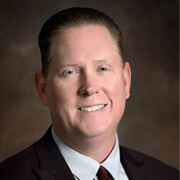In January 2017, the Governmental Accounting Standards Board (GASB) issued Statement No. 84 Fiduciary Activities (GASB 84). The Statement is effective for fiscal years beginning after December 15, 2018, which in practice means for fiscal years ending December 31, 2019, and later. Fiduciary activities are those activities that state and local governments carry out for the benefit of individuals and other agencies outside the government such as employee groups, members of the public, and other governments. This article will provide an overview of the statement and some basis to consider which activities may need to be treated differently under GASB 84, keeping in mind that some activities may impact budgeting or the account structure for the 2019 calendar year or the 2019/20 fiscal year. The GASB is currently working on an Implementation Guide for this standard, which is expected to be issued in 2019.
Read part two of our series: GASB 84 Defining Four Generic Types of Fiduciary Funds
GASB 84 is the first major change to the way fiduciary activities are identified and reported since GASB 34, which is now almost 20 years old. Before GASB 84, none of the existing standards defined fiduciary activities. GASB 34 required governments to include fiduciary funds in the financial statements and defined those funds, but did not provide clear definitions of what constitutes fiduciary activities. There was a wide diversity in practice for reporting fiduciary activities. Specific guidance was not available for identifying what needed to be reported in fiduciary funds and what needed to be reported in a government’s own funds. Moreover, similar activities of governments were not being reported on a comparable basis. For example, a single activity could be reported in a governmental fund, a fiduciary fund, or not reported at all.
GASB 84 defines and clarifies fiduciary activities and establishes criteria for identifying those activities with a focus on whether a government is controlling the assets and the beneficiaries with whom the relationship exists. The standard requires all pension and Other Post-Employment Benefit (OPEB) trusts (as defined in GASB 67 and 74) to be reported as fiduciary funds. This is most likely already happening in the vast majority of cases.
Beyond pension and OPEB trusts, identifying other fiduciary activities is where we can get started with implementing GASB 84. Other fiduciary activities have all of the listed attributes in place and, if those are not present, an activity might need to be presented in a government’s own funds or possibly not at all.
For an activity to be fiduciary, the assets have all of the following attributes:
- Held under control of the government. Control of the assets is defined in the standard as being met if the government holds the assets or can direct their use.
- The activity must also not be solely based on the government’s own-source revenues.Own-source revenues are revenues generated by the government itself such as water/sewer charges and income and property taxes.
- No administrative involvement such as monitoring recipients for compliance, determining eligibility, discretion in the allocation of funds or direct financial involvement such as matching requirements or liability for any disallowed costs.
Activities that do not have these attributes would not be fiduciary activities; these would be reported as funds of the government itself or potentially not reported at all. This has some implications on current practice. Activities may either need to be moved into the government’s own funds or moved to fiduciary funds.
- If any funds are managed by an employee of the government (such as a staff advisor to an outside or inside group), those would not be fiduciary activities based on administrative involvement and need to be reported in a government’s own funds.
- If deposits or other funds are being held in enterprise funds, those are fiduciary activities and would need to be moved to fiduciary funds. An exception would be funds expected to be held for three months or less, and those can continue to be reported in an enterprise fund.
- Grant activities would generally not be fiduciary activities as there is administrative involvement through subrecipient monitoring and possible direct financial involvement such as matching requirements or responsibility for any costs that are disallowed.
- A significant change for some governments in Michigan will be that the MERS Retiree Health Funding Vehicle now meets the definition of a fiduciary activity and will need to be recorded in a fiduciary fund, as may not have been the case under current practice.
GASB 84 describes four generic fiduciary fund types and makes some significant changes to the financial statements of fiduciary funds. Those changes are more focused on the year-end financial statements and will be discussed and described in future articles.
With the effective date of this standard being what it is, we still have time to analyze, learn, and plan for implementation. Additionally, we expect specific guidance to be forthcoming from the GASB, GFOA, and MGFOA to help with implementing this standard. For now, we can focus on educating ourselves on the standard and starting to analyze how it might affect each of our unique situations.
Yeo & Yeo is here to help. Please don’t hesitate to reach out to your Yeo & Yeo professional with questions about this standard. We will be happy to assist you.


